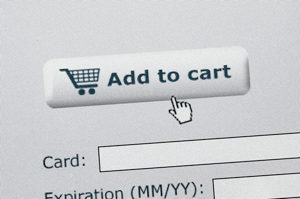In autumn 2018, Stripe officially announced the launch of Stripe Terminal, an option for in-person payments.
However, it’s not quite what you’re thinking. The Stripe Terminal solution allows businesses to build their own card-present checkout system by programming it with pre-certified card readers. The company calls it an “API-driven solution” and says that it’s geared toward tech-savvy businesses with both online and offline selling channels.
If you’re not tech-savvy (or don’t have an in-house developer) or if you don’t have an ecommerce store/online payment channel, you’ll want to consider other options.
Features
As an in-person card acceptance option, the Stripe Terminal enables, well, card acceptance in person. You can accept credit and debit cards using a compatible reader, and may also be able to take NFC (contactless) payments as well. Depending on the reader you choose, you’ll be able to take advantage of capabilities like custom messaging to the cardholder during a purchase. Stripe promises to make it easy to customize the messages that cardholders see on the terminal screen, letting a business offer a coupon or provide information.
Businesses will also be able to update their in-person checkout machines from their online account, controlling the machines remotely. Additionally, Stripe boasts that the new solution allows you to view customers and sales across multiple sales channels, including online and offline sources of payments. That’s helpful for businesses that have both online and offline store options.
Who Should Use Stripe Terminal?
Stripe has a reputation as a platform for developers, and that’s the case for Terminal as well. Stripe itself suggests that the Terminal is good for “internet-first” retailers and service providers. That is, businesses that primarily sell online, but are expanding into brick-and-mortar sales, or occasionally host pop-up shops or other in-person sales events. The Terminal supplements online card acceptance by allowing a cohesive solution for businesses that sell both on and offline.
The Terminal requires more programming than some other in-person solutions, so it’s best for tech-savvy businesses or those with a development team.
When reading about Stripe Terminal, you may see comments that it’s not set up for businesses such as coffee shops, salons, and other small businesses. It doesn’t mean that those businesses can’t use the Terminal – rather, it’s just to caution that Stripe Terminal requires developer knowledge. Small businesses that don’t have a lot of technology demands (such as coffee shops and salons) don’t have in-house developers to handle that type of integration and may find it too frustrating.
Furthermore, a key benefit of Terminal is a seamless experience managing both online and offline payments. If your business doesn’t accept payments online (such as a coffee shop), that benefit is useless for your business and another solution will be a better fit.
Square vs Stripe Terminal
Given that Square is well-known for in-person payments, it’s logical to assume that Square and the Stripe Terminal are competing. That’s not quite the case.
Square seeks to be a quick setup card acceptance option that doesn’t require programming knowledge. The company’s plug-and-play style readers and pre-made app allow even the smallest business to get started accepting cards with little effort and no development work.
Stripe has always been a developer-focused company that offers comprehensive solutions for those with technical knowledge. That carries over into the Stripe Terminal, which allows businesses to build their own in-person checkout solution. It’s not as much of an “off-the-shelf” solution as Square.
Stripe itself dismissed the idea that Terminal competes directly with Square by commenting that the target user bases are different.
That said, there’s no reason a customer using (or considering) Square couldn’t choose Stripe Terminal instead. However, it may not be worthwhile if that customer doesn’t have technical knowledge or need the features that programming it yourself affords.
SDKs and Compatible Readers
Stripe started out offerning two software developer kits (SDKs) for the Terminal, an iOS and a JavaScript SDK. In 2019, it added one for Android as well.
To use it, you’ll also need a compatible reader. There are currently two options: The BBPOS Chipper 2X mobile reader or the Verifone P400 countertop terminal. The Chipper 2X connects via Bluetooth and works with an iOS SDK. The P400 connects via ethernet and works with a JavaScript SDK. The company plans to offer additional readers (including countertop models with an iOS SDK) in the future.

Stripe suggests the current iOS SDK and mobile reader combination if you’re planning for a “mobile-first” experience accepting cards using an iOS device or if you prefer a Bluetooth-enabled reader. The company suggests the JavaScript SDK and countertop reader if you’re looking to create a fully-branded checkout with customizable splash screens and dynamic messages shown to the customer during transactions, or if you prefer a stationary, countertop checkout solution.
Note that the Verifone P400 is a PIN pad, not a standalone terminal, meaning that it needs to be paired with a POS system or other “host” device.
Stripe Terminal Rates
Currently, Stripe Terminal costs 2.7% + 5 cents per transaction. You’ll also need to purchase a reader. The Chipper mobile reader costs $59 while compatible countertop models by Verifone will run you about $299.
Stripe also advertises that custom enterprise rates are available for large businesses.
Prices subject to change.
At the end of the day, the deciding factors for whether Stripe Terminal is right for you will include:
- The level of development effort you’re willing to take on (or sign your team up for)
- If another pre-made in-person terminal can satisfy your needs
If you’re not interested in taking on development work, or if existing in-person terminals cover your use case, you’ll want to look elsewhere. If you’re looking for an option to develop your own in-person system, Stripe Terminal can make that process easier.







